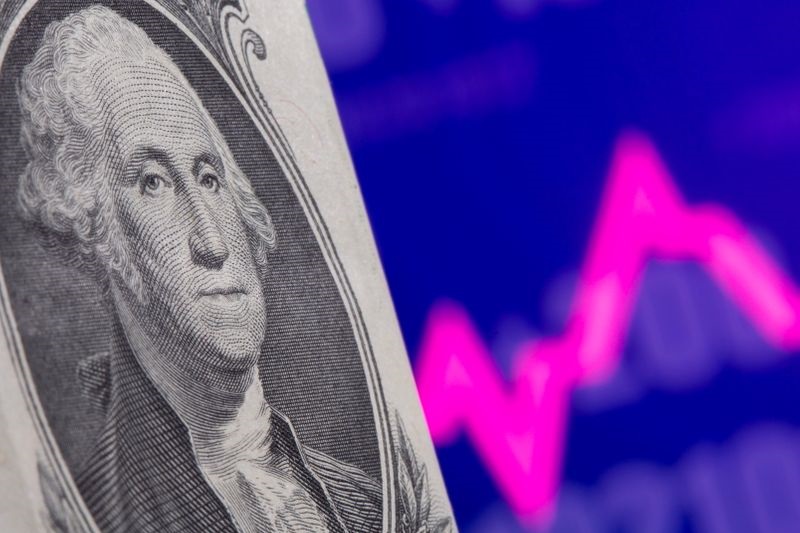Forex
Dollar edges higher ahead of key economic data, including payrolls


© Reuters
Investing.com – The U.S. dollar edged higher in early European trade Tuesday ahead of this week’s key economic data that may provide clues on the Federal Reserve’s next moves.
At 04:00 ET (09:00 GMT), the , which tracks the greenback against a basket of six other currencies, traded 0.1% higher at 101.125, recovering slightly from a five-month low after the greenback slid some 2% in 2023.
Payrolls to guide dollar sentiment
The dollar was hit hard by raised expectations that the Fed will begin trimming interest rates in 2024, with the showing traders pricing in an over 70% chance for a 25 basis point rate cut in March 2024.
But until the March meeting, markets still have a barrage of key economic readings to contend with.
U.S. data, due for release later Tuesday, is expected to show that this important sector remains in contraction territory, and from the last Fed meeting in December are scheduled for release on Thursday.
But most eyes will be on Friday’s data for December. This is expected to show that the number of jobs created during the last month of 2023 fell to 163,000, from just under 200,000 the previous month. This slowdown in the labor market is widely expected to factor into monetary policy.
Euro edges back from five-month high
In Europe, traded 0.1% lower at 1.1031, inching away from last week’s five-month peak of 1.1139 after manufacturing PMI data confirmed the sector remaining firmly rooted in contraction territory throughout the region.
The single currency gained 3% last year, its first yearly gain since 2020.
rose 0.2% to 1.2751, with sterling having registered its strongest performance last year since 2017 with a 5% gain.
That said, data released earlier Tuesday by the showed that U.K. food prices eased to 6.7% in December from 7.7% the previous month, the lowest level since June 2022.
This will add to expectations that the will start cutting interest rates in 2024, likely weighing on the pound.
Yen slumps after major earthquake hits Japan
Elsewhere, traded 0.5% higher to 141.55, even with Japanese markets shut for a week-long holiday, after a devastating earthquake in central Japan hit sentiment.
traded 0.5% higher at 7.1346, as official data showed further deterioration in manufacturing activity.
While a showed some strength in the sector, growth still remained largely modest, while employment and inflation failed to pick up substantially. The readings indicated little signs of recovery in Chinese economic activity at the end of 2023.

 Forex3 years ago
Forex3 years agoForex Today: the dollar is gaining strength amid gloomy sentiment at the start of the Fed’s week

 Forex3 years ago
Forex3 years agoUnbiased review of Pocket Option broker

 Forex3 years ago
Forex3 years agoDollar to pound sterling exchange rate today: Pound plummeted to its lowest since 1985

 Forex3 years ago
Forex3 years agoHow is the Australian dollar doing today?

 Cryptocurrency3 years ago
Cryptocurrency3 years agoWhat happened in the crypto market – current events today

 World3 years ago
World3 years agoWhy are modern video games an art form?

 Commodities3 years ago
Commodities3 years agoCopper continues to fall in price on expectations of lower demand in China

 Economy3 years ago
Economy3 years agoCrude oil tankers double in price due to EU anti-Russian sanctions


























